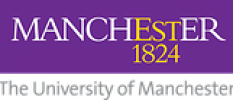© Pint of Science, 2025. All rights reserved.
In just one night, with a pint in hand, Manchester's finest researchers will take you on a whistle stop tour of our universe. From understanding its growth and expansion, to the formation of planets and whether they may sustain life – this event is all over the space!!
How to Map the Universe
Dr Laura Wolz
(Presidential Fellow, The University of Manchester)
Just like our houses are built along streets, galaxies, each the home to billions of stars, are forming structures along the underlying dark matter. Some are aligned in walls and filaments, some clustered together in groups, and some isolated in voids. The web-like patterns of the galaxy distribution can tell us the story of our Universe; its expansion, its growth and its underlying physics. I will illustrate a new way to map the cosmic web by using the lightest and most abundant element: Hydrogen. The small atoms emit light at radio wavelengths used to map our Cosmos and its entire history.
How to Build a Solar System
Megan Hammett
(PhD Student in Isotope Geochemistry and Cosmochemistry, The University of Manchester )
Humanity’s ability to explore space has never been greater. But, as we start to look beyond our own Solar System, the basic questions of planetary science are brought into sharp focus. How do Solar Systems form and evolve into what we see today? This talk will take you on a journey back in time (and forwards again!) to see how our Solar System was made. We will make our own ‘planet in a bottle’ to explore the processes that formed our planets and Moon 4.56 billion years ago. There’s even a chance to handle some out of this world samples of Mars, the Moon and an asteroid’s iron core!
Tuning into the Universe – new technology for radio astronomy
Amy Suddards
(PhD Student, The University of Manchester)
Since the accidental birth of radio astronomy in 1923 by Karl Jansky, rapid technological advancements have allowed us to observe the most extreme objects in the farthest corners of the Universe. However, there are still instrumentation challenges that leave us unable to collect certain signals from space. As we move through the 21st century, developments in a variety of new materials such as Gallium Arsenide and Indium Phosphide, as well as computational and analytical improvements, will open our observational eye even wider. Who knows what we might discover…
Map data © OpenStreetMap contributors.
